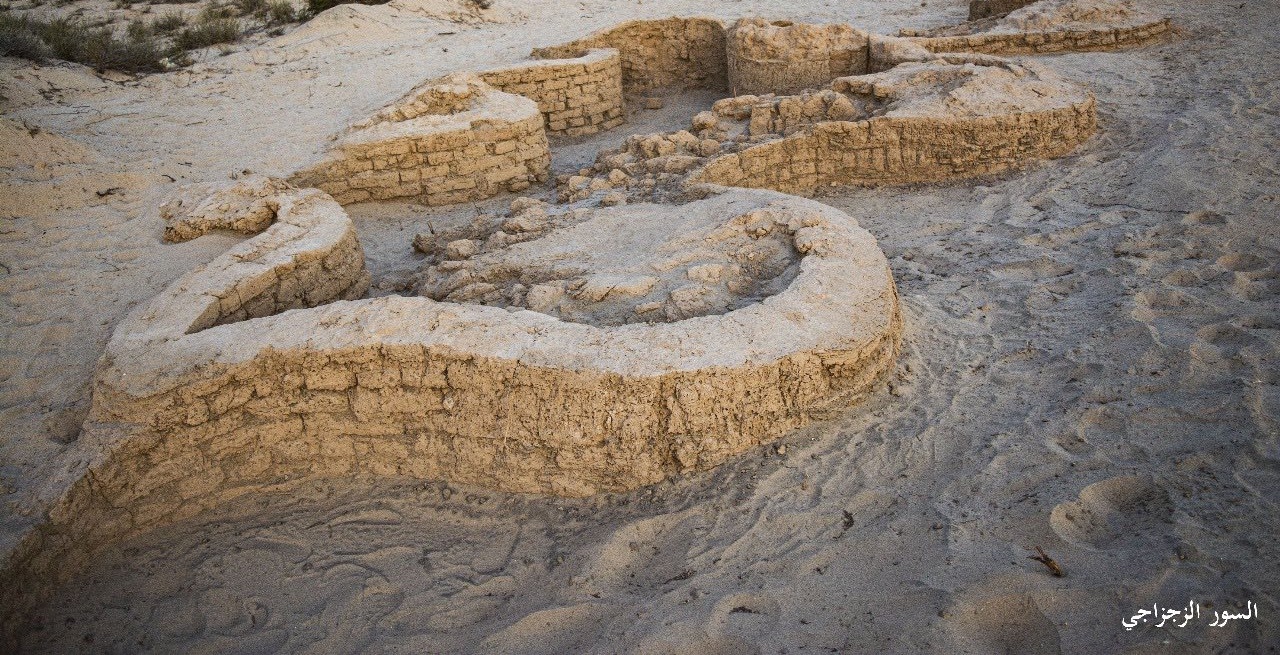When you think of ancient Egypt, you might imagine towering pyramids, majestic temples, and the noseless Great Sphinx of Giza. But the iconic civilization produced many more architectural marvels beyond the monuments it’s best known for today. One such example has just come to light in the sands of the Sinai.
Archaeologists working in the northern region of Sinai—the Egyptian peninsula bordering Israel—have discovered a military fort from ancient Egypt’s New Kingdom era (1550–1077 BCE) along the Horus Military Road. Also known as the “Way of Horus,” this was a chain of ancient Egyptian fortifications in North Sinai created during the New Kingdom.
The recently discovered fort is one of the chain’s biggest and most important, according to a social media post by Egypt’s Ministry of Tourism and Antiquities. “The fortresses likely served as rest stops for trade caravans moving into Egypt, but also as places to reprovision the Egyptian army when it went on campaign across the Near East,” explains Nicky Nielson, an Egyptologist from the University of Manchester who wasn’t involved in the discovery, in an interview with Popular Science.
The archaeological excavation unearthed defensive towers; portions of the northern, western, and southern walls; a distinctive New Kingdom wall surrounding a residential area for soldiers; and pottery shards and vessels. Among the finds was a handle bearing the name of Thutmose I, a pharaoh from the 18th dynasty (around 1539 to 1292 BCE).
Researchers also discovered a large bread oven and fossilized dough, confirming that soldiers lived out their daily lives within the fortress. “Bread was very much a staple of the Egyptians—bread and beer specifically,” Nielson explains. He adds that texts from slightly later reigns, such as that of Ramesses II, mention provisioning the army with bread as a key food.
These texts belong to a genre of writings known as The Hardships of a Soldier’s Life, intended to show scribal students the difficulties soldiers faced. One grim excerpt highlighted by Nielson reads: “His bread and his water are upon his shoulder like the load of a donkey; his neck having formed a ridge like that of a donkey. The vertebrae of his back are broken whilst he drinks of smelly water and halts only to keep watch.”
The fortress appears to have undergone multiple restorations and modifications over time. Archaeologists expect to find the military port that served it located near the coast. Notably, the fort spans an area of around 86,111 square feet (8,000 square meters), which is three times the size of another fortress discovered just about 700 meters away in the 1980s, according to the ministry’s post.
Mohamed Ismail Khaled, Secretary General of the Supreme Council of Antiquities, explained that the discovery offers valuable insight into the fortifications safeguarding Egypt’s eastern borders during the New Kingdom. “Every new fortress that comes to light highlights that ancient Egypt was more than just tombs and temples—it was a strong state capable of defending itself,” he said.
Christian Knoblauch, an archaeologist specializing in ancient Egypt and Nubia from Swansea University, told Popular Science the site is crucial for understanding not only how the Egyptian state defended newly won territories in Sinai at the start of the New Kingdom but also how it organized its occupation and managed relationships with local populations and foreign powers.
“On the one hand, it demonstrates the massive investment of material and human resources required to occupy this territory, but probably also the economic and political rewards for doing so,” Knoblauch added.
Moving forward, the archaeological team hopes to uncover the remaining walls and related structures to gain an even deeper understanding of this significant fortress and its role in ancient Egyptian military and political strategy.
https://www.popsci.com/science/archaeologists-discover-ancient-egyptian-fortress/



